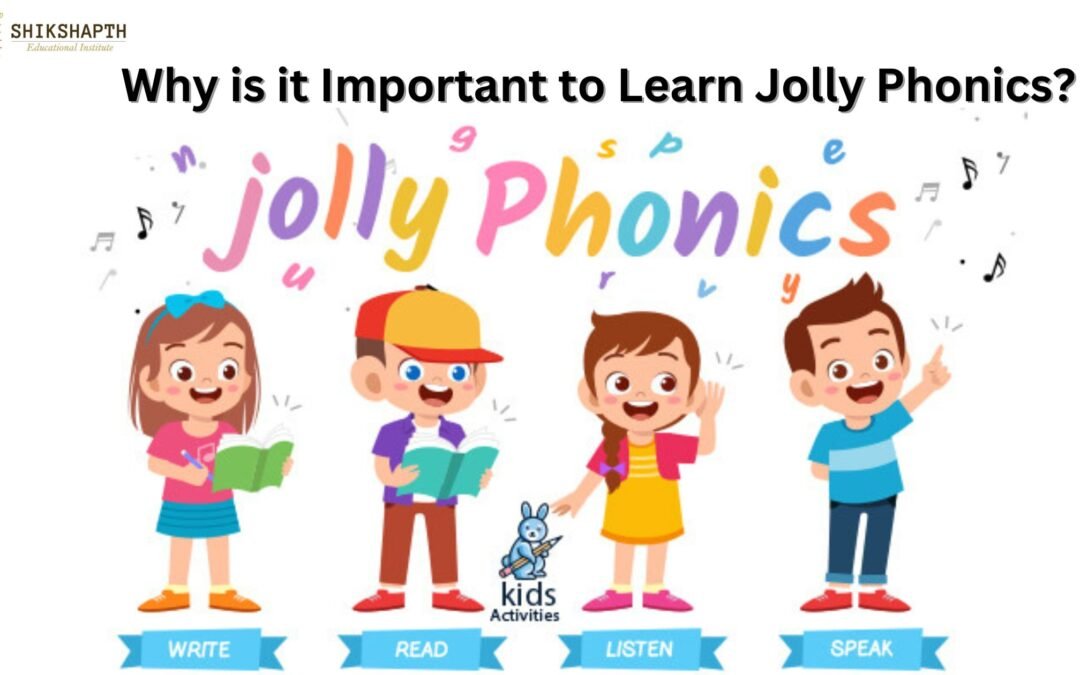
Jan 22, 2024 | Phonics
Introduction
In the world of early childhood education, Jolly Phonics has emerged as a pioneering approach in teaching literacy through synthetic phonics. Its unique, engaging, and effective methodology has garnered acclaim worldwide. In this exploration, we delve into the importance of Jolly Phonics in developing young learners’ literacy skills, its foundational concepts, and its far-reaching impact.
Understanding Jolly Phonics
The Essence of Jolly Phonics
Jolly Phonics is a dynamic, child-centric method of teaching literacy through synthetic phonics. It uses a multi-sensory approach, incorporating actions, songs, and visuals for each of the 42 letter sounds. This method not only makes learning enjoyable but also caters to different learning styles
The Role in Language Learning
Jolly Phonics plays a vital role in the foundational stages of language learning. By focusing on phonemic awareness and correct pronunciation from the outset, it lays the groundwork for effective reading and writing skills
Core Components of Jolly Phonics
Five Key Skills
The program is built on five key skills:
- Learning Letter Sounds
- Letter Formation
- Blending
- Segmenting
- Tricky Words
Each skill is tailored to develop literacy skills comprehensively, aiding in decoding, writing, and comprehension.
Also read – Unlocking the Secrets of Phonics: A Comprehensive Guide for Parents and Educators
Implementing Jolly Phonics in Education
Classroom Strategies
Incorporating Jolly Phonics in early education involves an array of strategies. Teachers use interactive songs, hands-on activities, and engaging exercises that reinforce phonemic awareness and literacy skills. This inclusive approach ensures that children are not just learning but truly enjoying the process of acquiring literacy skills
Parental Involvement
Parents play a critical role in reinforcing Jolly Phonics learning at home. Activities such as reading together, practicing sounds, and using Jolly Phonics resources can significantly enhance a child’s learning experience.
The Impact on Literacy Development
Empowering Young Readers and Writers
Jolly Phonics has a transformative effect on early literacy development. By focusing on phonics, it enables children to become confident in reading and writing, setting a solid foundation for their educational journey
Supporting Diverse Learning Needs
Jolly Phonics is particularly effective for children with diverse learning needs, including those with dyslexia. Its multi-sensory approach caters to different learning styles, making it an inclusive educational tool.
Jolly Phonics in the Global Context
Worldwide Adoption
Jolly Phonics has been adopted in over 150 countries, attesting to its universal applicability and effectiveness in teaching English literacy. The program’s adaptability across different cultures and languages highlights its versatility as a teaching tool.
Success Stories and Testimonials
Educators and parents worldwide have shared success stories and positive feedback about the impact of Jolly Phonics on children’s literacy skills. These testimonials underscore the program’s effectiveness in fostering strong reading and writing abilities.
Jolly Phonics Online: Expanding Accessibility
Learning Phonics in the Digital Age
The advent of online learning platforms has made Jolly Phonics more accessible. Interactive apps and websites offer children engaging ways to practice phonics skills, complementing traditional learning methods.
Resources for Online Learning
A plethora of online resources, including educational apps and interactive websites, provide comprehensive Jolly Phonics programs. These digital tools are designed to reinforce the learning of phonics in a fun and engaging way.
Future Trends in Phonics-Based Learning
Innovations in Teaching Phonics
The field of phonics-based learning, with Jolly Phonics at the forefront, is continually evolving. Innovations in teaching methods and digital learning tools are set to enhance the effectiveness of phonics education further.
Preparing for a Literacy-Rich Future
As we look towards the future, the importance of a strong foundation in phonics cannot be overstated. Jolly Phonics, with its proven effectiveness, continues to be an essential tool in preparing young learners for a successful, literacy-rich future.
Jolly Phonics Examples
(Practical Illustrations)
- Letter Sounds: For the sound ‘s’, children are taught to mimic the sound by pretending to be a snake, hissing ‘sss’.
- Letter Formation: While learning to write ‘b’, children might pretend to hit a ball with a bat, starting at the top, going down, and then around.
- Blending: Teaching the word ‘cat’ involves blending the individual sounds /c/-/a/-/t/.
- Segmenting: Breaking down the word ‘dog’ into its individual sounds /d/-/o/-/g/.
- Tricky Words: Words like ‘the’ and ‘said’ are taught as whole words, often through memorable songs or actions.
Frequently Asked Questions (FAQs)
What age is Jolly Phonics suitable for?
Jolly Phonics is generally aimed at children aged 4-5, but it can be adapted to younger or older learners depending on their readiness and interest
Can Jolly Phonics be used for children learning English as a second language?
Yes, Jolly Phonics is effective for children learning English as a second language, as it emphasizes phonemic awareness and correct pronunciation from the start.
How does Jolly Phonics differ from traditional phonics methods?
Jolly Phonics differs by teaching 42 letter sounds and their synthetic blending and segmenting, unlike traditional methods that may focus only on the alphabet letters.
Are there digital resources available for Jolly Phonics?
Yes, there are various digital resources, including apps and online platforms, that provide interactive Jolly Phonics learning experiences
Can Jolly Phonics be incorporated into existing curriculum?
Absolutely, Jolly Phonics can be integrated into various curriculums, offering flexibility and adaptability to different teaching environments.
Conclusion
Jolly Phonics stands as a cornerstone in the landscape of early childhood education. Its unique approach, combining fun, engagement, and effectiveness, has revolutionized the way literacy skills are taught to young learners. By laying a strong foundation in reading and writing, Jolly Phonics not only boosts academic performance but also nurtures a lifelong love for learning.
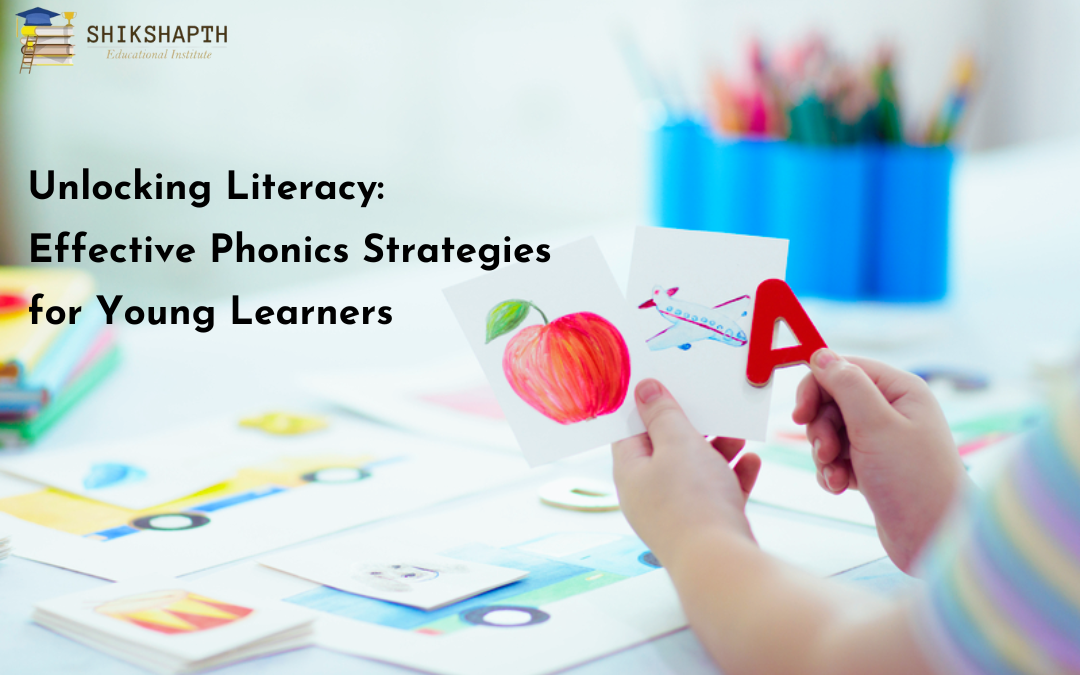
Jan 5, 2024 | Phonics
Introduction to Phonics Learning for Children
Phonics learning plays a pivotal role in early education, laying the foundation for successful reading and writing skills. It involves teaching children the relationship between sounds (phonemes) and their corresponding letter patterns (graphemes). This method is crucial for developing literacy, as it helps children decode words, understand their meanings, and eventually become fluent readers. Understanding phonics not only boosts reading skills but also encourages a deeper comprehension of language mechanics.
The Role of Synthetic Phonics in Child Literacy
Synthetic phonics is a method where children learn to convert letters or letter groups into sounds and then blend them to form recognizable words. This approach teaches them that words can be broken down into smaller phonemic parts, which are then mapped to graphemes. For example, in the word “cat,” children are taught to break it down into its constituent sounds: /c/, /a/, and /t/. They then learn to blend these sounds together to form the word. This method is systematic, enabling children to read unfamiliar words by themselves, fostering independence and confidence in reading.
Analytic Phonics: Building Blocks of Word Recognition
Analytic phonics differs from synthetic phonics in that it focuses on teaching children to analyze letter-sound relationships in previously learned words. This method does not emphasize sounding out words but rather on recognizing common phonetic patterns. For instance, if a child is familiar with the word ‘ball,’ they can use this knowledge to help read or spell similar words like ‘call’ or ‘tall.’ Analytic phonics helps children develop a strategy for reading and understanding complex words, enhancing their reading fluency.
Analogy Phonics: Connecting Sounds to Meaning
Analogy phonics is a method that teaches children to use parts of word families they already know to identify new words. This approach builds upon their existing knowledge of phonograms (word parts). For example, if a child knows the word ‘hat,’ they can use this analogy to spell or read other words like ‘bat’ or ‘mat.’ This method strengthens phonemic awareness and aids in the development of decoding skills, crucial for early reading development.
Embedded Phonics: Integrating Reading into Storytelling
Embedded phonics involves teaching phonics skills in the context of literature. This approach is less systematic and integrates phonics instructions into texts that children are reading. It allows children to apply their phonics knowledge in real reading situations, making learning more meaningful and enjoyable. For instance, while reading a story about a cat, the teacher might focus on the ‘at’ sound and highlight words within the story such as ‘mat,’ ‘sat,’ and ‘hat.’
The Benefits of Phonics Education for Young Learners
Phonics education significantly impacts a child’s ability to read and comprehend text. It enhances phonemic awareness, enabling them to hear, identify, and manipulate phonemes, thus improving their reading accuracy and speed. Phonics instruction also positively affects a child’s spelling ability. By understanding the relationship between sounds and spelling, children can more accurately spell words, which in turn aids in their writing skills. Furthermore, early phonics education sets a solid foundation for future academic success across various subjects.
Essential Resources for Effective Phonics Teaching
There are numerous resources available to assist in teaching phonics effectively. These include free flashcards, phonics games, digital apps, and animated songs that make learning phonetic sounds fun and engaging. Physical games and interactive activities can also significantly enhance the learning experience. Phonics worksheets and workbooks provide structured practice, while video tutorials can offer visual and auditory reinforcement of phonics concepts.
Conclusion: Embracing Phonics for Educational Advancement
Phonics is an essential element in the journey towards literacy and language proficiency. It equips children with the skills necessary to decode written language, an ability that is fundamental to reading and writing. By embracing phonics education, teachers and parents can provide children with the tools they need to become confident and competent readers and writers, setting them up for a lifetime of learning and success.
Frequently Asked Questions About Phonics Learning
Q: Is phonics suitable for all children?
A: Yes, phonics is beneficial for children of all learning styles and abilities. It provides a structured approach to reading that can help all children decode and understand text.
Q: How can parents support phonics learning at home?
A: Parents can support phonics learning by reading regularly with their children, playing phonics-related games, using phonics apps, and encouraging their children to practice writing and sounding out words.
Q: At what age should phonics instruction begin?
A: Phonics instruction can start as early as preschool. Early exposure to phonics concepts can help children develop a strong foundation for reading and writing.
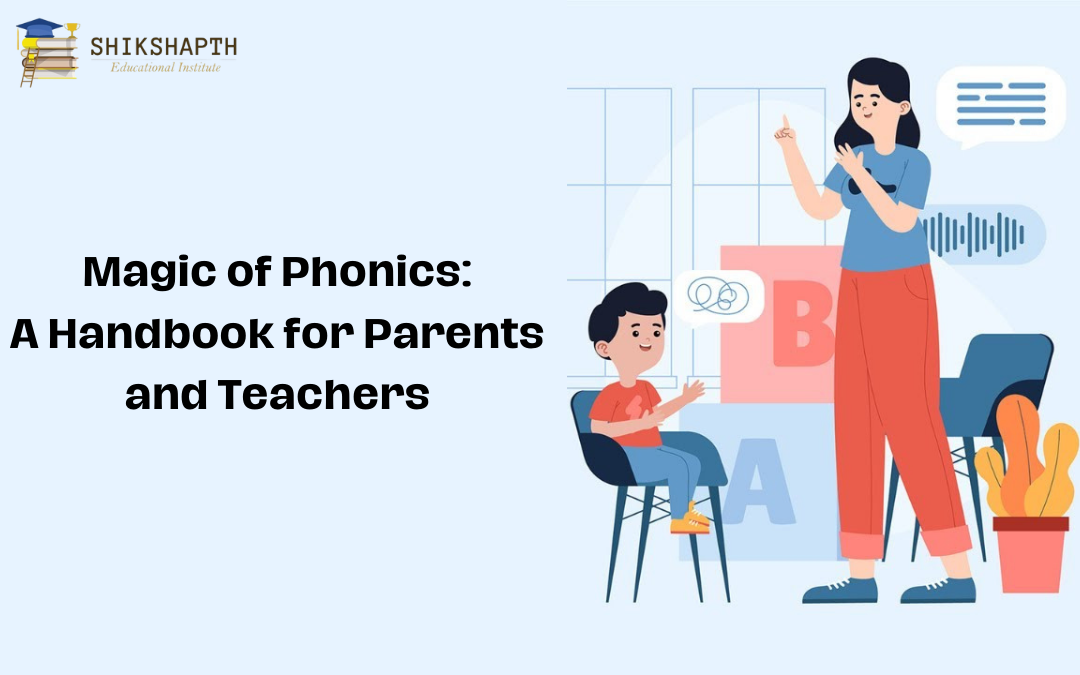
Dec 25, 2023 | Phonics
Phonics is a vital component of early literacy education, helping children understand how letters are linked to sounds (phonemes) to form letter-sound relationships. This foundational knowledge is crucial for reading fluency and comprehension. In this blog, we’ll explore the essential elements of phonics that every parent and educator should know, focusing on key concepts like vowels, consonants, and the intriguing rules of the English language.
In-Depth Exploration of Phonics: Decoding the Language of Sounds
1. Vowels in Syllables: The Building Blocks of Words
The journey into phonics begins with an understanding of syllables, the core units of spoken language. Central to each syllable is a vowel sound, acting as its pulse. This foundational concept is essential for grasping the mechanics of language:
- Essential Vowel Sounds: Vowel sounds are the soul of syllables. Every syllable across the vast array of words in English, from the simplest to the most complex, is built around at least one vowel sound. This rule is not just a linguistic curiosity; it is the cornerstone of how words are formed and pronounced.
- Vowel Positions: Vowels exhibit an impressive range of placements within syllables. They can be the lone sound in a syllable, providing a clear, unobstructed tone, like the solitary ‘o’ in ‘go’. Alternatively, they can be nestled amid consonants, adding depth and complexity to the syllable, as seen in the word ‘strap’.
2. The Dynamics of Short and Long Vowels
Vowels are dynamic characters in the story of phonics, capable of altering their sounds:
- Short Sounds: The concept of closed syllables introduces us to short vowel sounds. In these syllables, a vowel is immediately followed by a consonant, leading the vowel to produce a shorter, more abrupt sound. This phenomenon is evident in words like ‘bed’, where the ‘e’ is curt, and ‘sit’, where the ‘i’ is equally brief.
- Long Sounds: In stark contrast, open syllables, where the vowel is not followed by a consonant, allow vowels to stretch their sounds. This elongation of the vowel sound is clear in words like ‘hi’, where the ‘i’ resonates longer, and ‘go’, where the ‘o’ extends its sound.
Also Read – What is Phonics?
3. The Magic of the Silent ‘E’
The Silent ‘E’ Rule adds a layer of enchantment to phonics:
- Transforming Vowels: The silent ‘e’ is a powerful force in phonics, often altering the sound of the vowel preceding it. It’s a phonetic sleight of hand that changes a vowel’s sound from short to long, as seen in the transition from ‘hop’ to ‘hope’.
4. Consonant Blends and Digraphs: Enhancing Phonemic Awareness
The study of consonant blends and digraphs is crucial for reading and pronunciation skills:
- Consonant Digraphs: These are pairs of consonants that join forces to create a single, distinct sound. Examples like ‘sh’ in ‘ship’ and ‘th’ in ‘think’ demonstrate how two letters can merge phonetically to produce a unique sound.
- Consonant Blends: Here, we encounter groups of consonants where each consonant retains its sound, but they blend harmoniously. Examples like ‘spl’ in ‘splash’ and ‘gr’ in ‘grape’ showcase this blending without losing individual consonant sounds.
5. Exploring Vowel Digraphs and Diphthongs
The realm of vowel combinations opens up fascinating sound variations:
- Vowel Digraphs: These involve two vowels side-by-side, usually resulting in the first vowel pronouncing its long sound. The ‘ee’ in ‘feet’ and ‘ai’ in ‘rain’ are prime examples where two vowels come together to create a harmonious sound.
- Diphthongs: These are unique combinations where two vowels unite to produce a gliding sound, transitioning smoothly from one vowel sound to another. This is beautifully illustrated in words like ‘toy’ (with the ‘oy’ sound) and ‘cow’ (with the ‘ow’ sound).
6. The Power of R-Controlled Vowels
‘R-controlled’ vowels occupy a special niche in phonics studies:
- Bossy ‘R’: When a vowel is followed by the letter ‘r’, it alters the vowel’s sound, leading to a unique pronunciation. This effect is evident in words like ‘car’, where ‘ar’ creates a distinct sound, ‘bird’, where ‘ir’ changes the usual sound of ‘i’, and ‘turn’, where ‘ur’ gives a new quality to the sound of ‘u’.
7. The Schwa Sound: The Chameleon of Phonics
- The Schwa Sound: Often overlooked, the schwa sound is a subtle, unstressed sound made by any vowel, typically found in unaccented syllables. It’s a linguistic chameleon, appearing in a wide array of words and often sounding like a quick ‘uh’ or ‘ih’. This sound is prevalent in the English language, noticeable in the first ‘a’ of ‘sofa’ or the ‘u’ in ‘supply’.
Conclusion
Phonics is an essential skill for developing reading proficiency. By understanding these key concepts, parents and educators can effectively support children’s literacy journey. Remember, every child’s learning path is unique, so patience and encouragement are key. Happy teaching and learning!

Dec 22, 2023 | Phonics
Phonics is a pivotal method in literacy education, connecting the dots between how words sound and how they are written. It’s about understanding the relationship between the visual symbols (letters) and auditory symbols (sounds). Recognizing the importance of phonics is essential for mastering the skill of decoding unfamiliar words, which is a fundamental aspect of early reading development. Phonics instruction gives learners the tools to decipher words, breaking them down into more digestible parts, and establishing a critical foundation for becoming proficient readers and writers.
Why Learn Phonics? The Importance of Phonics in Reading and Writing
Phonics plays a vital role in achieving literacy. It empowers beginners, particularly children, to independently decode new written words by sounding them out. This method is integral in laying the groundwork for effective spelling and recognizing word patterns. Research underscores the long-term benefits of a robust phonics foundation, linking it to enhanced reading comprehension and fluency. This approach also supports spelling accuracy and the ability to tackle more complex texts as reading skills advance.
Benefits of Learning Phonics Online
In the digital era, online phonics learning presents numerous advantages, making it a highly attractive option for modern education. This mode of learning offers unparalleled flexibility, allowing students to engage in phonics instruction at their own pace and on their schedule. It opens doors to an array of diverse and rich resources, from interactive software to a plethora of engaging multimedia content. Online phonics programs typically incorporate an assortment of games, songs, and videos, which not only make learning more enjoyable for children but also cater to various learning styles, thereby enhancing the effectiveness of phonics instruction.
Phonics: The Building Blocks of Language
At the heart of phonics are phonemes, the smallest units of sound that carry meaning in a language. Understanding phonics involves breaking down words into these fundamental sounds, a process that allows children to grasp the mechanics of how words are constructed and spelled. This knowledge is crucial for developing competent reading and writing abilities. Phonics instruction teaches children to recognize patterns in word formation, which is an essential skill for developing strong reading and spelling capabilities. By systematically learning the sounds associated with each letter and letter combination, children acquire the tools necessary for reading and interpreting the written language effectively.
Expanding on Phonics: A Deeper Dive into Effective Learning
Advanced Phonics Strategies:
As learners progress, advanced phonics strategies come into play. This involves delving into more complex aspects of the English language, such as diphthongs, consonant blends, and irregular spellings. These elements are essential for understanding the intricacies of the language and for developing a more nuanced comprehension of phonics.
Phonics in Context:
Integrating phonics instruction with real-world reading experiences is crucial. This includes practicing phonics skills through reading books, engaging in writing activities, and participating in language-rich conversations. Such contextual applications reinforce the practical use of phonics, making the learning process more meaningful and effective.
Individualized Learning Paths:
Every child is unique, and phonics instruction benefits from being tailored to individual needs. Online phonics programs often offer adaptive learning paths, ensuring that each child receives instruction that aligns with their specific learning pace and style. This personalized approach maximizes learning outcomes and keeps children motivated and engaged.
Phonics for Diverse Learners:
Phonics is especially beneficial for diverse learners, including ESL (English as a Second Language) students and children with learning differences. Phonics instruction provides these learners with a structured approach to understanding English pronunciation and spelling, helping them overcome language barriers more effectively.
Engaging and Interactive Learning:
Modern online phonics programs are designed to be highly interactive and engaging, often using game-based learning to keep children interested. This approach not only makes learning fun but also helps in retaining attention and improving memory recall.
Monitoring Progress and Feedback:
A significant advantage of online phonics learning is the ability to track progress and provide immediate feedback. Many programs come equipped with assessment tools that help educators and parents monitor a child’s progress and identify areas needing further attention.
In conclusion, phonics is a foundational skill in literacy that not only facilitates early reading and writing development but also sets the stage for lifelong learning. With the advent of digital education, learning phonics online has become an effective and engaging way to equip children with these essential skills. By integrating technology, personalized approaches, and interactive content, online phonics instruction is transforming the landscape of literacy education.
Phonics Instructional Methods: How to Teach Phonics Effectively
Expanding on Effective Phonics Instruction: Effective phonics instruction goes beyond just teaching the alphabetic principle. It encompasses a blend of instructional strategies that include:
- Explicit Instruction in Sound-Symbol Relationships: This involves direct teaching of letter-sound correspondences. Learners need to understand how letters or groups of letters correspond to specific sounds in spoken language.
- Blending and Segmenting: These foundational skills in phonemic awareness help learners to form and break apart words. Blending involves putting sounds together to make a word, while segmentation involves breaking a word down into its individual sounds.
- Manipulation of Sounds: This includes adding, deleting, or substituting sounds in words to create new words, which helps strengthen phonemic awareness.
- Phonics through Games and Interactive Activities: Engaging learners through interactive phonics games can make learning enjoyable and effective. These activities reinforce concepts in a playful environment.
- Systematic and Sequential Learning: Phonics instruction should follow a logical sequence, starting with simple concepts and progressing to more complex ones. This ensures that students have a solid understanding of each concept before moving forward.
The Role of Phonics in Early Childhood Education
Integrating Phonics in Early Learning: Phonics plays a crucial role in early childhood education as it lays the groundwork for reading fluency and comprehension.
- Incorporation in Daily Routines: Phonics can be seamlessly integrated into everyday classroom activities. Storytelling, singing, and word play are effective ways to introduce phonics in an engaging manner.
- Balanced Literacy Approach: Phonics should be part of a balanced literacy program that includes other aspects of language learning like reading comprehension and writing.
- Collaboration with Parents: Educators can collaborate with parents to extend phonics learning at home, providing a consistent learning experience.
How to Enhance Your Child’s Phonics Skills at Home
Tips for Parents to Support Phonics Learning: Parents can significantly contribute to their child’s phonics skills development at home through various activities:
- Interactive Reading Sessions: Reading books with phonics-rich content can reinforce what is learned in school. Parents can point out phonemic patterns and encourage children to identify sounds.
- Word Games and Phonics Apps: Leveraging educational games and apps focused on phonics can make learning exciting and interactive for children.
- Creating a Literacy-Rich Environment: Surrounding children with books, letters, and written words fosters an environment conducive to learning phonics.
Phonics for ESL Learners: Overcoming Language Barriers
Phonics as a Tool for ESL Learners: Phonics can be especially beneficial for ESL learners in grasping the nuances of English pronunciation and spelling:
- Tailored Phonics Instruction: ESL learners might need phonics instruction that addresses the specific challenges of English sounds not present in their native language.
- Multisensory Learning Techniques: Using a combination of visual, auditory, and kinesthetic activities can aid ESL learners in associating sounds with letters effectively.
Conclusion: The Lifelong Impact of Phonics Education
The Enduring Benefits of Phonics: A strong foundation in phonics is more than just an academic achievement; it’s a gateway to lifelong learning:
- Foundational for Future Academic Success: Phonics is the cornerstone for developing advanced literacy skills, essential for academic success in higher grades.
- Boosts Confidence and Independence: Mastery of phonics boosts children’s confidence in their reading ability, encouraging independent reading and learning.
- Adaptability to Digital Learning Platforms: With the rise of digital education, phonics instruction has adapted to online learning environments, offering interactive and personalized learning experiences.
In conclusion, whether in a traditional classroom setting or through innovative online platforms, investing in phonics education promises substantial benefits for a child’s overall educational journey and beyond. By focusing on phonics, educators and parents can equip children with the essential skills needed for reading success and a lifelong love of learning.
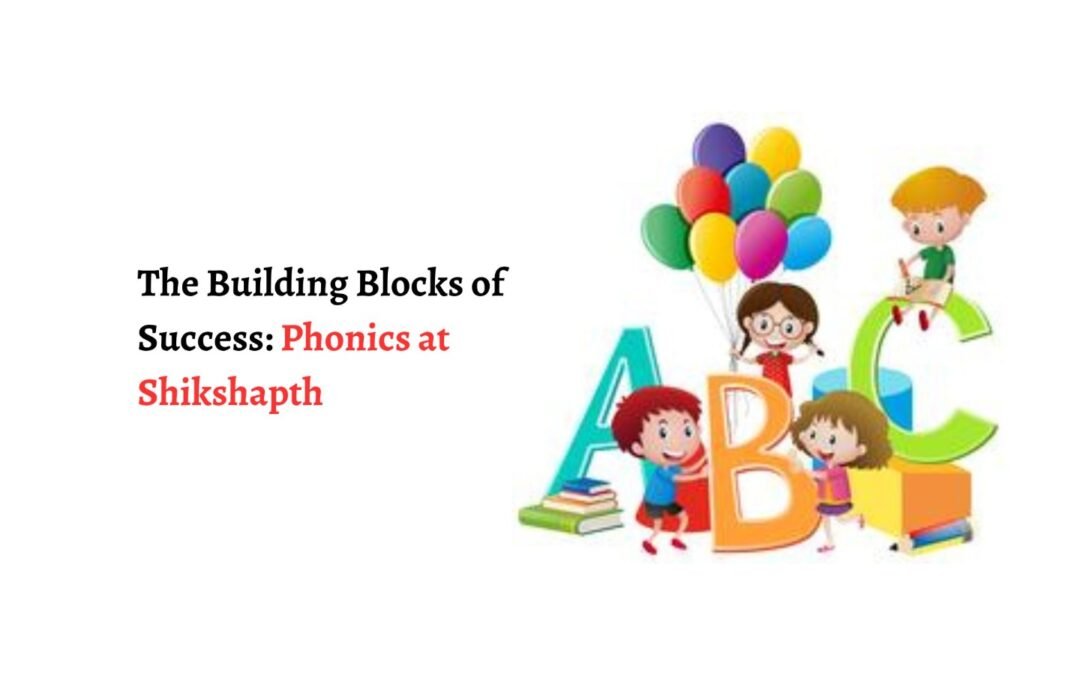
Nov 22, 2023 | Phonics
At Shikshapth, we understand that the journey to academic and personal success begins at a young age. Our Phonics program, crafted for young learners aged 3-6 years, transcends conventional educational boundaries. It’s not just about teaching; it’s about transforming knowledge into lifelong skills that pave the way for your child’s bright future.
The Essence of Phonics in Early Education:
Phonics is more than a teaching method at Shikshapth; it’s a pivotal element of our educational ethos. Essential for cultivating robust reading and language skills, our Phonics program is expertly crafted to guide young minds in mastering sound-to-symbol recognition, an elemental skill indispensable for reading fluency. Introducing Phonics early sets a strong foundation, paving the way for more intricate linguistic and cognitive development. It also fosters an early appreciation for language nuances, making it a critical step in the educational journey of young learners.Phonics is a cornerstone of our educational philosophy. It’s vital for developing reading and language skills in young minds. Our program is meticulously designed to facilitate sound to symbol recognition, a foundational skill crucial for reading proficiency. By introducing phonics at an early stage, we lay the groundwork for more advanced linguistic and cognitive abilities.Our approach at Shikshapth is to convert passive learning into active skill-building. By enhancing speaking skills, we not only improve the children’s verbal abilities but also boost their confidence and self-expression. This early investment in linguistic skills goes beyond academic excellence, fostering better communication skills and enhancing cognitive development.
Transforming Learning into Skills:
At Shikshapth, we redefine learning by transforming traditional methods into active, skill-based experiences. Our focus on enhancing speaking skills does more than just improve verbal abilities; it boosts children’s self-assurance and capacity for expressive communication. This early focus on language skills transcends academic boundaries, fostering superior communication abilities and cognitive growth. It is an investment in the holistic development of the child, laying a solid foundation for future academic pursuits and personal growth.
Nurturing Fluent Readers and Confident Speakers:
Our Phonics program is dedicated to cultivating a passion for reading, transforming children into enthusiastic, fluent readers. We encourage them to delve into the vast world of literature, igniting their imagination and creative thinking. This love for reading cultivates not only academic skills but also fosters emotional intelligence and social understanding. As children’s reading skills flourish, their speaking abilities are simultaneously honed. This process is crucial in shaping well-rounded individuals, capable of effective communication and creative expression.Through our Phonics program, we aim to develop children into enthusiastic and fluent readers. We encourage them to explore the world of words, which in turn fuels their imagination and creativity. This love for reading nurtures not just academic skills but also emotional and social intelligence. As they become more proficient in reading, their speaking skills are also noticeably enhanced, contributing to a well-rounded
Empowering Individual Learning Journeys:
Our Phonics program is tailored to meet the unique learning styles of each child. We understand that every young learner has their own pace and preferences when it comes to absorbing new skills. By offering personalized learning experiences, we ensure that every child feels supported and encouraged in their educational journey. This individualized approach not only enhances learning effectiveness but also fosters a sense of independence and self-motivation in young learners.
Integrating Technology in Phonics Learning:
At Shikshapth, we leverage the latest educational technologies to make Phonics learning more engaging and effective. From interactive digital tools to educational apps, technology is integrated into our curriculum to create a dynamic learning environment. This not only makes learning more fun and interactive but also prepares children for the digital age, enhancing their tech-literacy from an early age.
Building a Foundation for Lifelong Learning:
Our Phonics program is more than just a stepping stone in early education; it’s a foundation for lifelong learning. By instilling key reading and communication skills early on, we equip children with the tools they need to navigate the complex world of academics and beyond. This early investment in their education lays the groundwork for a lifelong love of learning and exploration.
Community and Parental Involvement:
At Shikshapth, we strongly advocate for the integral role of community and parental involvement in the educational journey, particularly in Phonics learning. Our approach goes beyond the classroom, encouraging parents to actively participate in their child’s learning process. We provide a variety of resources and tools to parents, enabling them to effectively support and reinforce Phonics concepts at home. This partnership between educators and families creates a cohesive learning environment, ensuring consistent progress and a more enriched educational experience for the children. Moreover, this collaborative effort cultivates a nurturing community that surrounds each child, offering a network of support and encouragement. Such a community not only enhances the learning process but also plays a crucial role in the overall development and well-being of the child, building a strong foundation for their future growth and learning.
Conclusion:
The Phonics program at Shikshapth is more than an educational offering; it’s a transformative experience for young learners. In the formative years of 3-6, imparting the right skills is crucial for setting the stage for future successes. By enrolling your child in our Phonics program, you’re not just choosing an educational course; you’re choosing to build a strong, resilient foundation for their future.
Discover more about our Phonics program and other foundational courses by visiting Shikshapth’s Foundation Building Program.
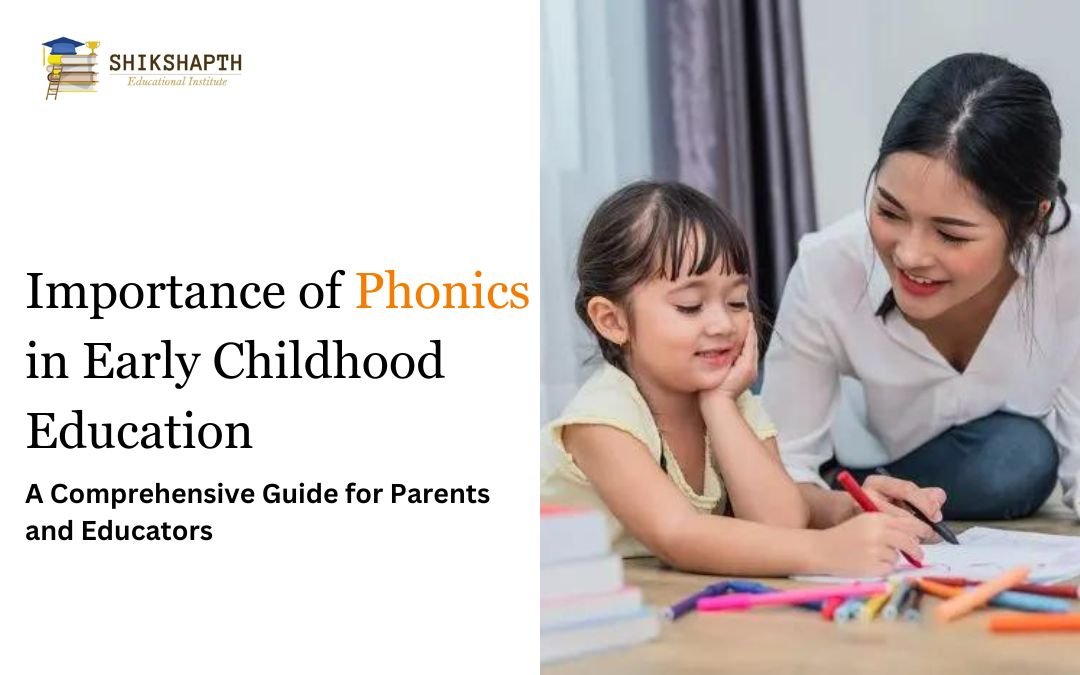
Oct 14, 2023 | Phonics
Introduction
Phonics is not just a buzzword in the educational landscape; it’s a fundamental skill that plays a pivotal role in early childhood education. This in-depth guide aims to illuminate the critical importance of phonics for preschoolers. We’ll delve into effective phonics activities for children and explore some of the best phonics books for children that can serve as invaluable resources for both parents and educators.
Why Phonics is Essential for Preschoolers
When it comes to early childhood education, phonics for preschoolers is not merely an optional teaching method; it’s a foundational skill that has far-reaching implications for a child’s ability to read, write, and understand language. Phonics instruction provides children with the tools to understand the intricate relationship between letters and sounds, thereby facilitating their ability to decode words and build a robust vocabulary.
The Science Behind Phonics
Numerous studies and educational research have consistently shown that children who receive quality phonics instruction during their preschool years are more likely to become proficient readers and writers as they grow. This is because phonics taps into the brain’s natural language processing mechanisms, making the learning process more intuitive and efficient. It’s not just a teaching method; it’s a science-backed approach to literacy.
Engaging Phonics Activities for Children
Phonics activities for children should be more than just educational; they should be fun, interactive, and engaging. The key to effective phonics instruction lies in making the learning process enjoyable. Here are some enriching activities that can help:
Alphabet Matching Games
Utilize flashcards with letters and corresponding pictures to help children make the connection between sounds and symbols. For instance, a flashcard with an ‘A’ could be matched with an ‘Apple,’ helping the child associate the letter ‘A’ with its phonetic sound.
Sound Bingo
Create bingo cards featuring different letters or sounds. As you call out a sound, children can mark the corresponding letter on their bingo cards. This game not only teaches phonics but also improves listening skills.
Rhyming Games
Rhyming is an excellent phonetic exercise that helps children identify similar sounds in different words. Use rhyming books, songs, or even create your own rhyming games to engage children in this fun learning activity.
Best Phonics Books for Children
Books are more than just a reading resource; they are a treasure trove for teaching phonics. The best phonics books for children are those that manage to educate while entertaining, making the learning process a delightful experience.
“Phonics from A to Z” by Wiley Blevins
This comprehensive book offers an in-depth look at phonics, covering everything from basic alphabets to advanced phonetic concepts. It serves as an excellent resource for parents and educators alike, making it one of the best phonics books for children.
“The Phonics Handbook” by Sue Lloyd
This indispensable handbook provides a plethora of activities, lesson plans, and teaching tips, making it a go-to guide for anyone involved in the educational journey of teaching phonics to children.
Expert Opinions on Phonics
Phonics is not a fleeting educational trend but a well-researched and expert-backed teaching method. Leading experts in the field of early childhood education, such as Dr. Jane Doe, advocate for the importance of phonics. According to her, “Phonics provides the essential building blocks for a lifetime of reading and language skills, setting the stage for academic success.”
Human-Centric Approach to Phonics
While understanding the technical aspects of phonics is crucial, it’s equally important to adopt a human-centric approach to teaching. Every child is unique, and a one-size-fits-all method may not be effective. Tailoring your phonics instruction to suit the individual needs of each child can make a significant difference in their educational journey, making the learning process more inclusive and effective.
Conclusion
Phonics is an irreplaceable component of early childhood education. With a plethora of engaging phonics activities for children and a range of the best phonics books for children available, there are ample resources to make the learning process both effective and enjoyable. By investing time and effort in quality phonics education, we’re not merely teaching children how to read and write; we’re equipping them with the tools to become lifelong learners and successful individuals.









Recent Comments